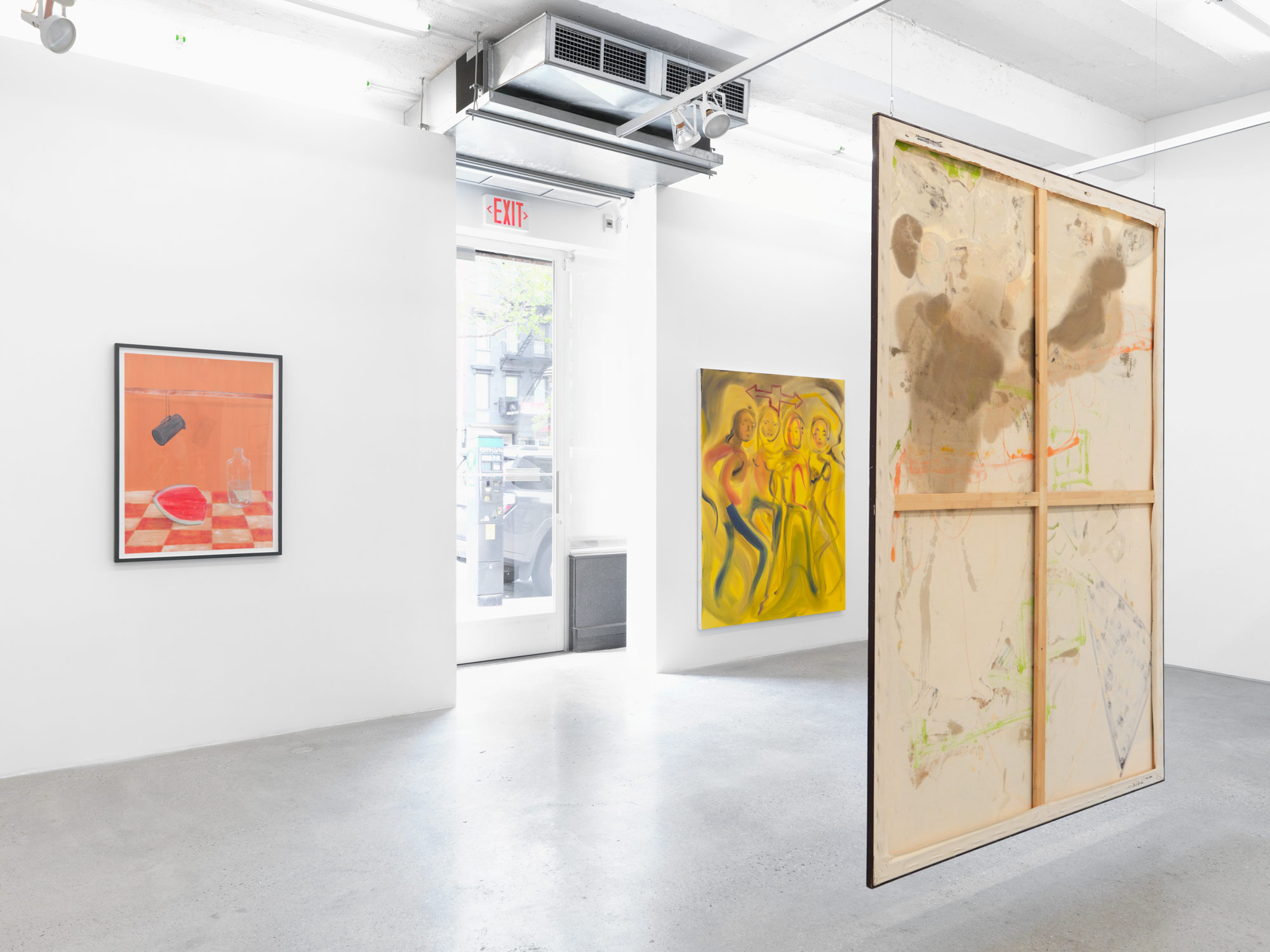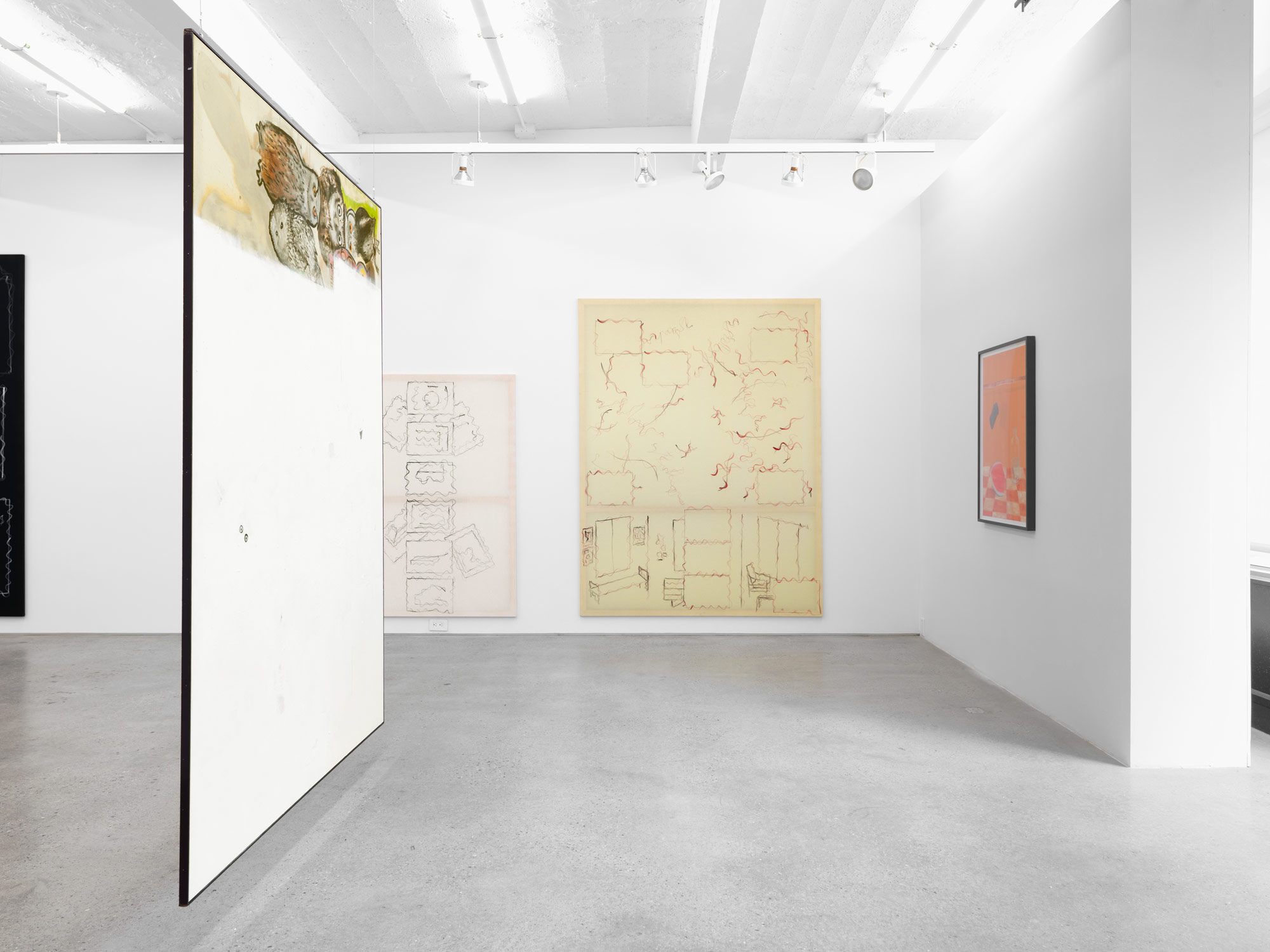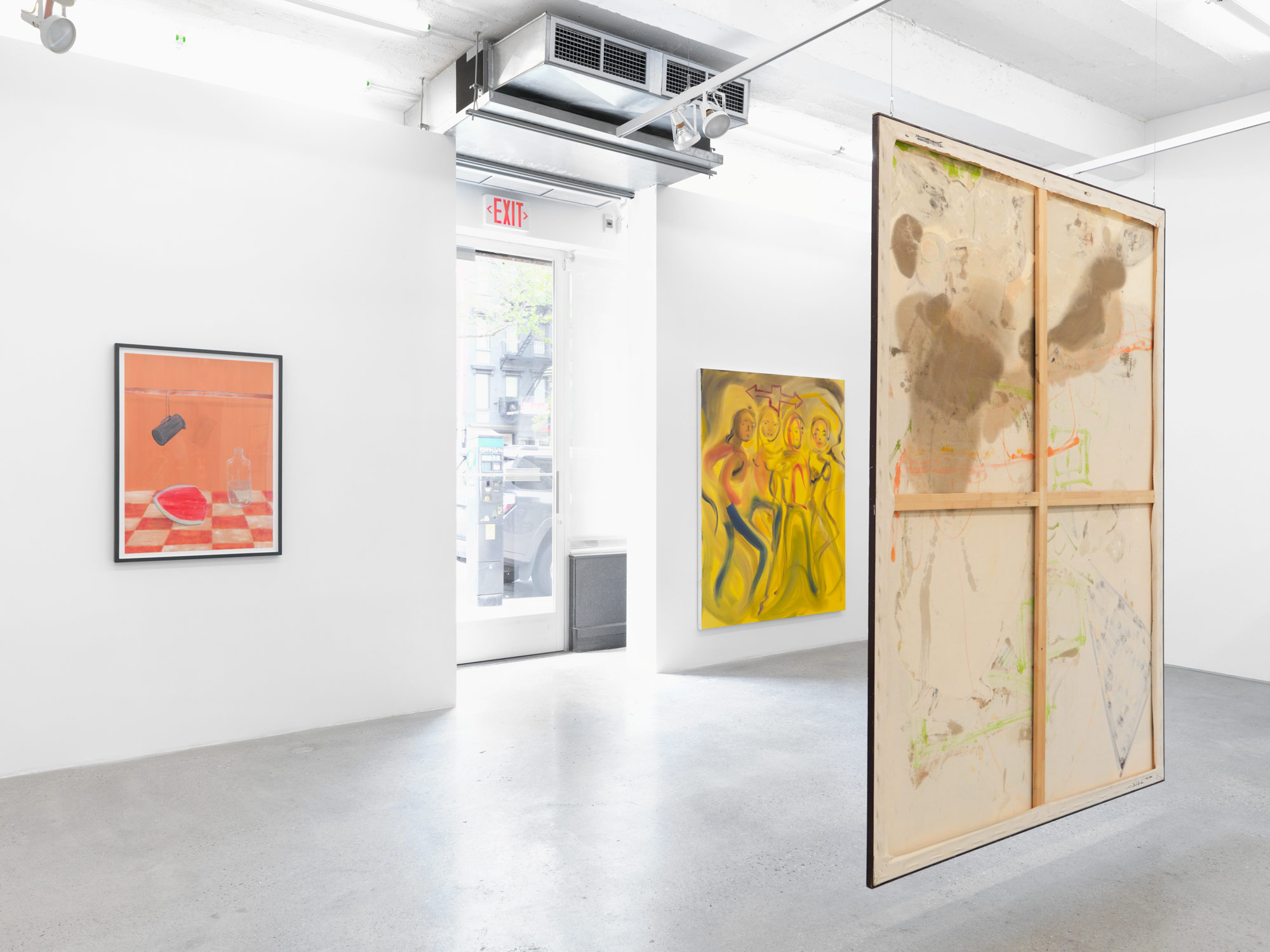[ad_1]

Installation view of “Im Grunde ist es die Wahrheit / Essentially it’s the truth” at Magenta Plains in New York, with works visible, left to right, by Mark van Yetter, Sophie von Hellermann, and David Ostrowski (verso).
COURTESY MAGENTA PLAINS
In our current “post-truth” and “alternative facts” moment, any mention of truth makes for a divisive situation, pitting one group against another on their respective platforms, with little room for nuance. The recent show at Magenta Plains, “Im Grunde ist es die Wahreit / Essentially it’s the truth” seemed to find a way around that divide, allowing space for subtlety, speculation, and conjecture.
Consisting strictly of paintings, the exhibition included works by Sophie von Hellermann, David Ostrowski, Gerda Scheepers, and Mark van Yetter. The content of the works can be seen as straddling abstraction and representation, each in their respective ways, with Ostrowski and Scheepers leaning more toward abstraction, and von Hellermann and van Yetter toward representation, but only ostensibly so. The paintings hold one in the present moment, allowing for a suspension of any preconceived notions one may have about distinctions between abstraction and representation.
Scheepers’s paintings are comprised of spare line drawings of interiors or floor plans, which are then crossed out with a wavy or less solid line. The rendering of these gestures could lead to confusion as to which came first, the diagrams or the abstractions. Her marks are minimal brushstrokes, never exceeding the amount needed to complete the task at hand, and most are painted on semi-transparent fabric, exposing the structure of the stretcher bars holding it all together. Confident in their self-cancellation, her paintings present a conflicting statement. They hang on the wall, signs without signifieds, wherein the process of the making creates the meaning.
Unlike Scheepers’ works, which favor a quickness of gesture and production, Ostrowski’s multilayered paintings span 10 years—started in 2009 and revised in 2019. His paintings utilize the reoccurring motif of owls, rendered in different variations. Some paintings show the spray-painted line Ostrowski has become known for, which looks as if the spray-paint cap is partially clogged, leaving a semi-solid line of colored spittle. Other paintings have been mostly slathered with a solid color, leaving the owls floating in partial obscurity. In Radical Paintings (Hatte bereits 5 Beziehungen), 2009/19, a pair of owl eyes peek through what is a mostly stark white field. The owls return one’s gaze, silently evoking an owl’s call, “hoo.” This reversal of scrutiny turns any question proposed about the validity of this work back onto its viewer: “who?” What to make of a painting that aggressively asks more questions than it answers?

nstallation view of “Im Grunde ist es die Wahrheit / Essentially it’s the truth” at Magenta Plains in New York, with works visible, by David Ostrowski (left), Gerda Scheepers (center, on back wall), Mark van Yetter (right).
COURTESY MAGENTA PLAINS
Mark van Yetter’s paintings are relatively small in comparison to the other works in the show, and figures typically appear in them alone. There is an almost voyeuristic quality to the paintings that heightens what intentionally little narrative quality they convey. All works are oil on paper and framed behind glass. In two works, both untitled from 2016, a grey-painted rectangle borders the image. This frame within a frame creates self-aware, structural paintings that direct one to the illusory space within. In one, a solemn, rainy looking man shields himself under an umbrella from a storm of pennies. A premeditated refusal of good fortune?
Through a loose narrative structure, von Hellermann succeeds at providing ample room for one to project their personal interpretation onto her paintings. In contrast to van Yetter’s solo figure paintings, her works all show a collective of figures, some of them appearing to be a coterie of women. With airy, nonchalant brushstrokes on unprimed canvas, What’s Up Group (2018) shows four figures, possibly in motion, with an iPhone share icon painted at their feet. Sharing within a group, communicating with your peers, asking questions with other people, this particular painting feels like a summation of the exhibition itself.
Whether through abstraction or representation, seeking truth within painting can be a fool’s errand. And now with so much emphasis on, and instrumentalization of, truth, it may no longer be a tool for artists to use, nor it be a desirable endpoint for a work of art. This show finds a way to exhibit cohesively a varied group of paintings that traffic in speculative modes of production and presentation, utilizing multiple methods to eschew the pitfalls of truth—touching on it while not committing to it.
[ad_2]
Source link

